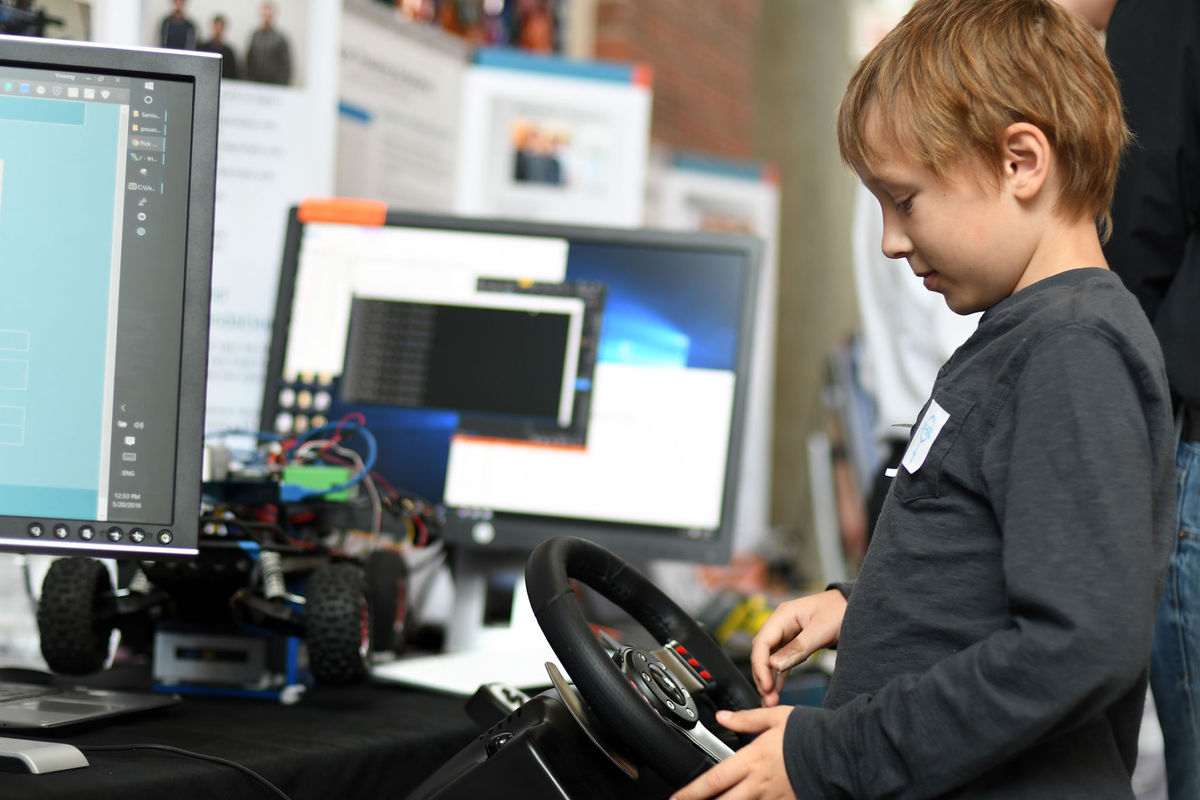By Anthony Rimel
Rockets. Race cars. Graduation caps with solar-powered fans mounted on them.
And there was more: Canoes made from cement. A Web service for finding people for pick-up sports games. Camera systems for unmanned aircraft. Water purification systems. Devices that repel dogs with sound. A magnetic field generator.
These and nearly 200 other projects were on display at Oregon State University’s Kelley Engineering Center Friday during the 17th annual Undergraduate Engineering Expo. The event, which this year was included as part of the revived da Vinci Days festival, gives engineering students a chance to share their senior capstone projects with hundreds of visitors, including local high school students.
Christopher Espeland, a senior in civil engineering, was at the event presenting research he and his teammates had done about the construction of the new OSU-Cascades campus in Bend. Espeland’s contribution was analyzing slopes in four locations in the second phase of the development, in which buildings will be constructed on a site that was formerly a pumice mine.
Espeland concluded slopes at the four locations, which would be near walkways and roads, were steep enough to provide risks of falling to people walking near them and of landslides.
“If the slope fails and there is a landslide it could kill people,” he said.
However, he calculated that there was enough room in those areas to cut the slope with earth-moving equipment so that the angle of the slope would be reduced. This would reduce the risk at a lower cost than building a retaining wall, he said.
Other group members recommended items such as creating an underground system to store rainwater to reduce flooding risk, and then reusing that water by heating it and piping it under sidewalks to help keep them clear during cold weather.
And the conclusions by Espeland and his team may not be completely theoretical: they used data from the contractor working on the second phase of the development and will be presenting their conclusions to the firm.
Espeland said he chose the project because it gave him the chance to work on something related to OSU that might end up being used in real life.
Espeland said it was nice to be able to represent civil engineering at the expo. He said civil engineering something is perceived as somewhat less glamorous than other engineering fields.
“It’s really cool to apply what I’ve learned and share it with the public,” he said. “Even if I’m just working with dirt, it’s pretty cool what I did.”
Michael Oatman, a senior in electrical engineering and computer science, and his partners presented a prototype for a wireless bridge-maintenance system. The system is a series of solar-powered strain gauges that would be attached to a bridge that are connected by radio signal to a central processing hub, which would broadcast readings from the gauges over a mobile Internet connection to a website, where anyone could check it.
Oatman said the idea for the devices came from civil engineering professor Daniel Borello, and their challenge was actually making the devices and programming the electronics involved in the project. He said there aren’t any plans to test them on a real bridge.
Oatman said the risk of seismic activity over the next 50 years means a device like this could be useful.
“There’s a need for a way to remotely monitor bridges without having to physically visit and test it,” he said.

